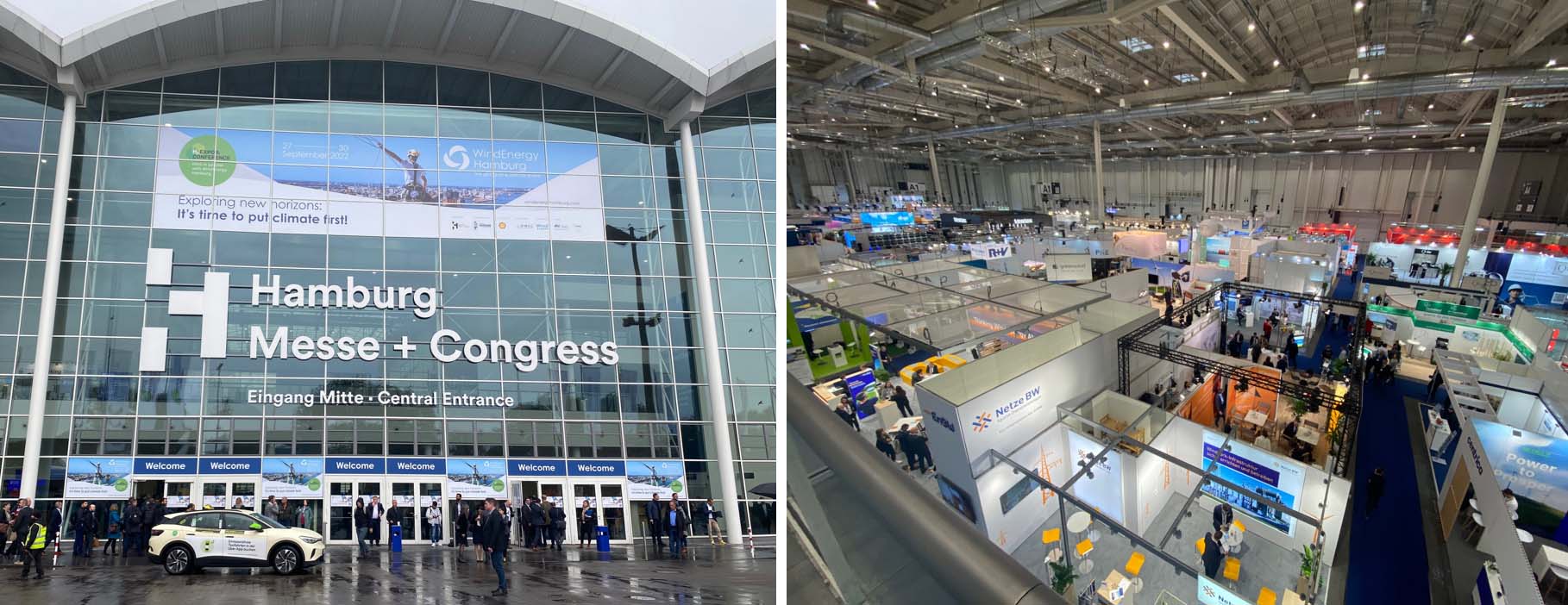Development of wind energy and hydrogen industries: complementing each other
October 31, 2022

In late September, the WIND Energy conference, the largest event of its type in Europe, took place in Hamburg, demonstrating the latest achievements in the onshore and offshore wind energy sector, as well as today’s top trend – the hydrogen technology. The scale of the event is a clear indicator that, in synergy with hydrogen as one of green energy sectors, the wind energy plays a leading role in the expansion of renewable energy on an international scale, bringing together investors, developers and manufacturers.
Over five days, the conference included more than 150 lectures and panel discussions with more than 1400 participants. The total area of exhibitor booths was 6.85 hectares and the conference was attended by approximately 30,000 participants from 92 countries. It can be said with confidence that Wind Energy conference in Hamburg was the place to be for those looking to discover what the industry has to offer, the innovations and the sector market as a whole, as well as to find potential business partners.
One of the key themes of the Wind Energy conference was the close synergy between wind energy and hydrogen technologies and it was also evident that, due to the rapidly growing demand, the wind and hydrogen industry market is currently saturated both with generating capacity and energy storage technologies. The innovation in this sector is very fast-paced at the moment. Wind turbines are becoming larger and more powerful and hydrogen technology is becoming more affordable.
To achieve its strategic goal, Latvenergo, in cooperation with Latvijas valsts meži AS, plans to use the highest and most powerful wind turbines available on the market with a total installed capacity of 800 MW. This volume may seem very ambitious to some, but even with such a large capacity to be installed, Latvenergo will still have to compete for the interest of equipment manufacturers.
The main objective of the conference was to bring together potential business partners. The range of exhibitor booths was immense and rich in innovations, attesting to the continuous progress of wind energy technology. Given the broad profile of wind energy, innovation can be seen across the industry and related sub-sectors.
Similar to other conferences and trade shows of this industry, the booths of wind turbine manufacturers were packed with displays of their latest turbine models and offerings. Nordex, for example, presented its latest N175/6.X turbine with a rotor diameter of 175 m and the installed power exceeding 6 MW. It is worth emphasising turbine manufacturers pay a lot of attention to the recycling of turbines, so that every single component could be recycled or reused. Siemens Gamesa presented the new, fully recyclable turbine blade RecycableBlade, which is now available for onshore wind farm turbines.
Alongside the turbine manufacturers, other companies related to wind energy and offering various services and equipment were also widely represented at the conference as well. We keep seeing new solutions for servicing the turbines, offering the use of robotic equipment. One of the exhibitors was the Latvian company Aerones, offering innovative robotic wind station service anywhere in the world.
There were also ingenious solutions for seemingly familiar and proven things on display, for example, a wind turbine tower made of modular parts or even from wood. It was possible to see how the development of various auxiliary equipment contributes to solving problems related to WPPs, such as bird monitoring equipment, radar equipment, bat detection, icing.
Given that the wind industry goes hand in hand with the hydrogen technology, they were brought together under one roof at the conference. Some time ago the potential of hydrogen and its possible applications were only discussed tentatively; now, the H2EXPO conference presented already operational projects, allowing to assess the usefulness of possible solutions with increased accuracy.
We had a closer look at the green hydrogen project near Rostock, recently built next to a solar park and supplying the generated green hydrogen to Amazon’s forklift truck fleet. We saw how a number of hydrogen project developers are focusing their efforts on electrolysis equipment, which in the future could be installed at sea next to offshore wind farms, so that the generated wind energy reaches the shore in the form of hydrogen, where it can be used in large-scale transport, green steel production or some chemical process.
Latvenergo is also working on a hydrogen pilot project and identifying the latest trends serves as an excellent source of experience for the implementation of our projects. The impressive range of technology at the exhibition confirms that the future development of both industries is and will be mutually complementary. We hope to see more and more companies and business partners in Latvia becoming interested in hydrogen generated from renewable resources.
Kaspars Cikmačs, Chief Development Officer of Latvenergo AS
Edgars Groza, Wind Parks Development Manager of Latvenergo AS